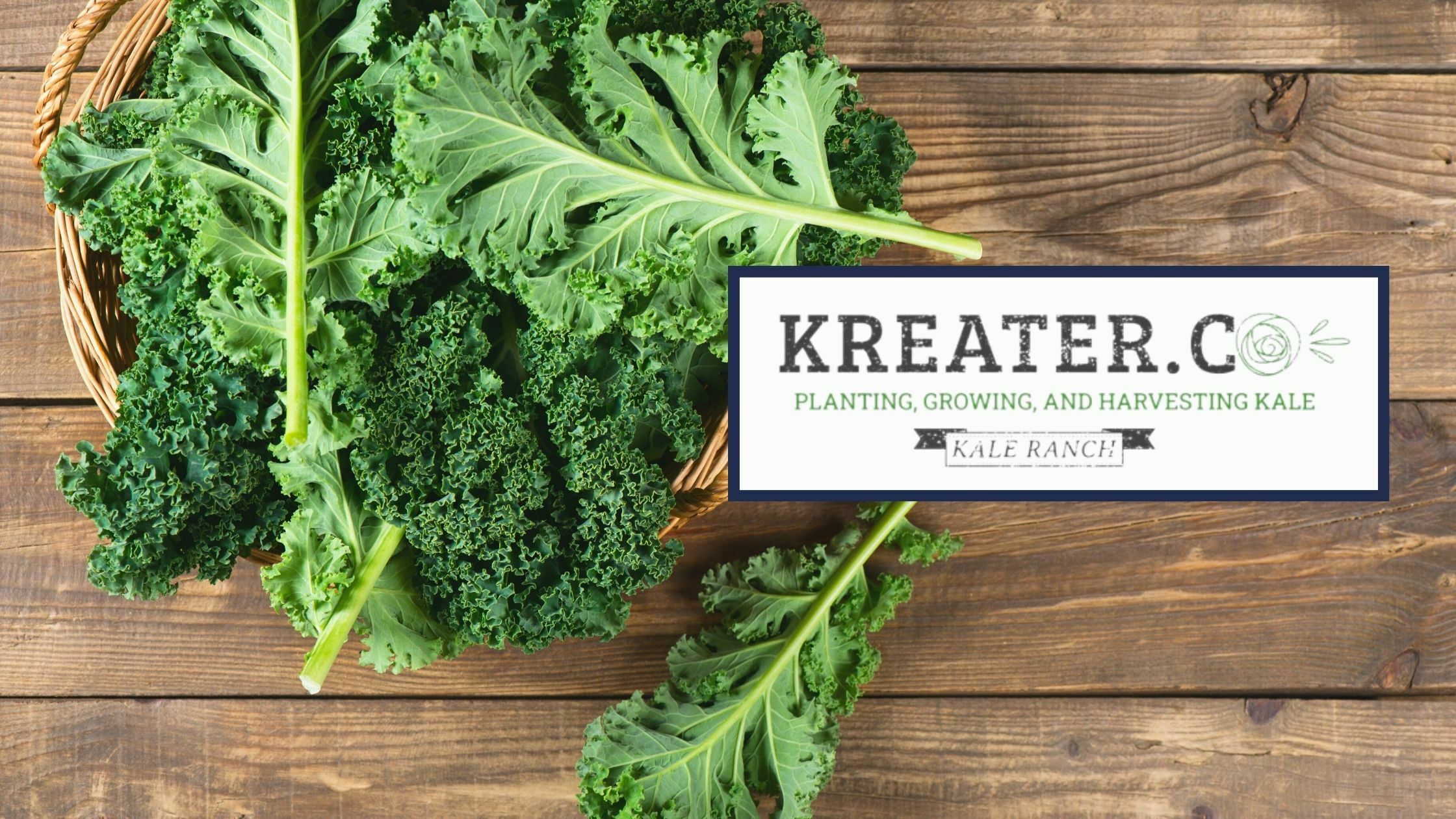Discover the various types of kale and their health benefits. From smoothies to snacks, kale is a versatile, nutrient-packed green that deserves a spot in every kitchen.
Kale is one of those underrated leafy greens you buy once in a while from your local market, but what if we told you that kale has numerous benefits for your health and that it is so versatile? There is probably a kale recipe to please every palate at home. Kale is definitely more than just another boring veggie, it actually comes in different types, and today you’ll learn all about them.
Kale reigns among all the super healthy greens, it is packed with nutrients, plus you can easily integrate kale in smoothies or have it as a crunchy afternoon snack; it is certainly a veggie that has a place in every kitchen.
Types of Kale History
Kale is part of the Brassica family, which includes Brussels sprouts, broccoli, cabbage, and cauliflower.
Kale’s origins go back to the Middle Ages; since it was easy to cultivate, it became a highly popular vegetable consumed by many. However, by the decades from World War I to World War II, its popularity had decreased.
It wasn’t until the vegans discovered the nutritional value of kale that it became relevant in modern diets worldwide.
Kale health benefits
Among the most important health benefits the different types of kale have to offer, we can mention:
- Lowers cholesterol. Kale plays a key role in making your cholesterol go down and keeping in check, which in other words, reduces the risk of heart disease.
- Improves your sight. Kale has lutein and zeaxanthin, two carotenoids that are essential for healthy eyes. Also, kale is an excellent source of beta carotene, which protects your eyes from disorders including macular degeneration and cataracts.
- Lowers cancer risk. Among kale’s superpowers is to avoid DNA mutations that can result in cancer. In addition, kale fights the disease by stopping cancer-causing compounds and increasing the possibility of killing them before they can cause serious harm to our bodies.
- Source of vitamin K. Did you know vitamin K is s absolutely critical for blood clotting, and a single cup of kale has almost 7 times the recommended daily amount of vitamin K.
- Kale will help you lose weight. Kale is one of those weight loss-friendly foods, it will not only keep you full, but the very best part is…are you ready? It is super low in calories and high in water content, which you want when on a weight loss journey. In addition, kale has protein, fiber, and low energy density; all these combined make sense to add kale to your weight loss diet.
Types of Kale
Kale may not always present itself in the green leaf you know and love. Check out the different varieties of kale and become a kale expert.
Lacinato Kale

Behind curly kale, lacinato kale ranks second in popularity, is not that hard to find. You’ve probably come across Tuscan or dinosaur kale, then that is your Lacinato.
Lacinato is hard to miss; it is long and has dark-gray leaves. It presents an earthy bitter taste. Chefs often used it as a garnish thanks to its bluish-green tinge and thin leaves, which added a touch of elegance to a dinner plate.
Lacinato kale can be consumed raw and cooked; it goes great when mixed with chili flakes, pressed garlic, and olive oil.
Curly Kale

Curly kale obviously gets its name after its ruffled leaves; it is the most common type. You’ll also find that curly kale has a pale to deep green color and long stems. You’ve probably seen it before at restaurants and grocery stores.
The taste of curly kale is like eating pepper in disguise, except for the bitter aftertaste. It is best suited to making chips since it gets quite crispy in the oven. It is also great for salads, but if you want an afternoon snack, all you need to do is sprinkle some salt and lemon juice.
Curly kale contains more Vitamin C than an orange, plus it counts toward your daily recommended servings of potassium and Vitamins B6 and K.
Chinese Kale

Chinese Kale is also known as “Chinese broccoli” because it oddly resembles one. It is an excellent source of Vitamins A and C, calcium, and iron.
It comes in two varieties. The white-flowered type grows to be 19 inches tall, while the kind that sports yellow blooms only reaches a height of 8 inches. Its flower heads resemble broccoli with glossy, blue-green leaves, although the kale variety is much smaller.
Chinese kale is popular in Chinese recipes to sweetened sauces, often used as a substitute for broccoli. Its taste also resembles broccoli.
Premier Kale
Types of kale: Premier kale or Early Hanover can withstand colder climates and yields a good harvest, maturing earlier than some other vegetables. It is one of the newer breeds, and when fully grown, its green leaves can reach a foot in length.
Premier kale is a treasure trove of nutrients, especially antioxidants and beta carotene.
It is also considered the most flavorful member of the kale family, which is why premier kale can be found in sandwiches and salads. Since the flavor is a lot softer than the curly kind, some people enjoy it raw by itself.
Baby Kale

Though it may look similar to curly kale, baby kale leaves are much smaller and thinner. And though it may be small in size, baby kale is big in nutrients. It is rich in Vitamins C, A, and K1, as well as potassium and iron, the reason why baby kale is often labeled as a superfood.
It can withstand colder temperatures but may also be grown year-round in warmer climates. All it needs is well-drained soil and full or partial shade.
Try adding baby kale to your smoothies; it is also good raw or sauteed and seasoned.
Walking Stick kale
Walking Stick kale may be a funny name, but this kale can reach up to six feet. After all, it is a suitable name since, if well preserved, it can actually become a walking cane.
And because the stems seem to give way to a burst of leaves, walking stick kale is also known as “walking stick cabbage.” These leaves are an excellent choice for making veggie tortilla wrappers and spring rolls.
When it comes to cultivating, this kale type is higher-maintenance than others. If you want it to grow, it requires rich, compost-layered soil and a consistent temperature of at least 75°F.
Redbor Kale

You can not only enjoy Redbor Kale for its nutty, herbaceous flavor, but you can also enjoy it for its aesthetic. In other words, Redbor isn’t only nice to eat, but it’s also pretty to look at, the reason why it is often used as a garnish.
It offers a range of nutrients, including Vitamins A and C, protein, magnesium, fiber, calcium, iron, and potassium. It is also an excellent source of alpha-lipoic acid, an antioxidant that lowers blood sugar and improves heart health.
Redbor is great if you want to add a touch of color to your garden or if you want to roast it with olive oil, salt, pepper, garlic powder, and apple cider vinegar.
Tronchuda Kale

One of the least common types of kale, this Portuguese kale, is characterized by soft, circular bluish-green leaves and slender white and green stems.
It is high in nutrients and low in carb, which makes it enter the superfood category. Its thick leaves make it ideal for juicing or smoothies.
This hardy plant withstands heat well, making it easy to grow. It’s also an aesthetically pleasing addition to any patio.
Siberian Kale
Siberian kale is perhaps the toughest kind as it can survive harsh, cold climates. It’s also heavily pest-resistant. Often linked to the turnip family.
This Siberian variety has thin stems and large, gray-green ruffled leaves. While it has a mild taste, the leaves can be rubbery, so it is not good to eat them raw.
This hardy kale sports bright yellow flowers to produce rapeseed oil, which is rich in Omega-3 and Omega-6 fatty acids.
Red Russian Kale

This veggie is characterized by flat, green, reddish-tinged leaves and a reddish-purple stem. It is also called r “scarlet kale” and originated in Siberia.
This kale type is highly recommended to eat raw due to its sweet and peppery taste. In Red Russian kale, you will find high levels of vitamins and minerals than all other members of the kale family combined!
It has high calcium content, so it is great for bone health. Add it to smoothies, salads, and juice. It’s also tasty when sautéed. Have you heard about Hydroponic Kale?



